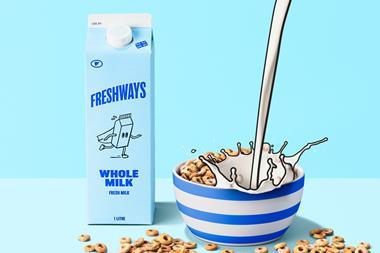>>Taste and texture remain drivers
The butters and spreads market is a fascinating barometer of our volatile attitudes to health and the role played by diet. Our database reflects significant new product activity in the mid-1980s as a range of low-fat spread options were launched by the major branded players.
But, who today remembers brands like Kraft Mellor or Anchor Freeway Low Fat Spread? It is another group of brands from the 1980s that survived the test of time better, a generation of products focused on taste and ease of use - Golden Churn, Clover and, a little later, I Can’t Believe It’s Not Butter.
This emphasis on taste persists today despite the more serious approach to health that emerged in the late 1990s. Taste and texture are significant drivers in the achievement of a high score in the category, with quality of mouthfeel and creaminess regularly listed as spontaneous consumer comments for well-rated products.
The use of olive oil in spreads proved to be a slow burner, initially criticised for an oily mouthfeel, but this has been overcome as the health benefits of olive oil have become more widely known.
The latest generation of famous branded olive spreads have only further stimulated this process and widened acceptance. The inclusion of olive oil justifies a premium price, particularly for those unwilling to graduate to functional spreads such as Flora Pro-activ. Healthy heart brands first appeared in the mid-1990s, although some early brands were short-lived. It was Benecol that timed it right, with initial scepticism countered by growing publicity over obesity and cholesterol. It will be interesting to see how these brands grow as government involvement in our diet increases.
Most accepted the new branding and stronger Italian credentials under the Bertolli name. High pre-trial interest was sustained after trial, with above average ratings for taste and texture maintaining the reputation of what was already a regular purchase for a quarter of our sample.
One of the specialist European butters in retailers such as Waitrose, this organic option looked “like it came from a farm” and tasted “fresh and creamy”. A price of £1.49 pushed this firmly into the special occasion category primarily for ABC1, pre-family, respondents.
Another olive oil brand extended into the spread market, presented in an attractive pack that generated top quartile levels of pre-trial interest. The product was said to look and taste really creamy and proved particularly popular in the south, where the overall score matched the current category maximum.
Produced for The Grocer by Cambridge Fast Foodfax®, an independent standardised new product testing service where a sample of 50 consumers rate new products across 10 key performance measures. Maximum score 50. Details on www.fast-foodfax.com.
The butters and spreads market is a fascinating barometer of our volatile attitudes to health and the role played by diet. Our database reflects significant new product activity in the mid-1980s as a range of low-fat spread options were launched by the major branded players.
But, who today remembers brands like Kraft Mellor or Anchor Freeway Low Fat Spread? It is another group of brands from the 1980s that survived the test of time better, a generation of products focused on taste and ease of use - Golden Churn, Clover and, a little later, I Can’t Believe It’s Not Butter.
This emphasis on taste persists today despite the more serious approach to health that emerged in the late 1990s. Taste and texture are significant drivers in the achievement of a high score in the category, with quality of mouthfeel and creaminess regularly listed as spontaneous consumer comments for well-rated products.
The use of olive oil in spreads proved to be a slow burner, initially criticised for an oily mouthfeel, but this has been overcome as the health benefits of olive oil have become more widely known.
The latest generation of famous branded olive spreads have only further stimulated this process and widened acceptance. The inclusion of olive oil justifies a premium price, particularly for those unwilling to graduate to functional spreads such as Flora Pro-activ. Healthy heart brands first appeared in the mid-1990s, although some early brands were short-lived. It was Benecol that timed it right, with initial scepticism countered by growing publicity over obesity and cholesterol. It will be interesting to see how these brands grow as government involvement in our diet increases.
Most accepted the new branding and stronger Italian credentials under the Bertolli name. High pre-trial interest was sustained after trial, with above average ratings for taste and texture maintaining the reputation of what was already a regular purchase for a quarter of our sample.
One of the specialist European butters in retailers such as Waitrose, this organic option looked “like it came from a farm” and tasted “fresh and creamy”. A price of £1.49 pushed this firmly into the special occasion category primarily for ABC1, pre-family, respondents.
Another olive oil brand extended into the spread market, presented in an attractive pack that generated top quartile levels of pre-trial interest. The product was said to look and taste really creamy and proved particularly popular in the south, where the overall score matched the current category maximum.
Produced for The Grocer by Cambridge Fast Foodfax®, an independent standardised new product testing service where a sample of 50 consumers rate new products across 10 key performance measures. Maximum score 50. Details on www.fast-foodfax.com.



















No comments yet